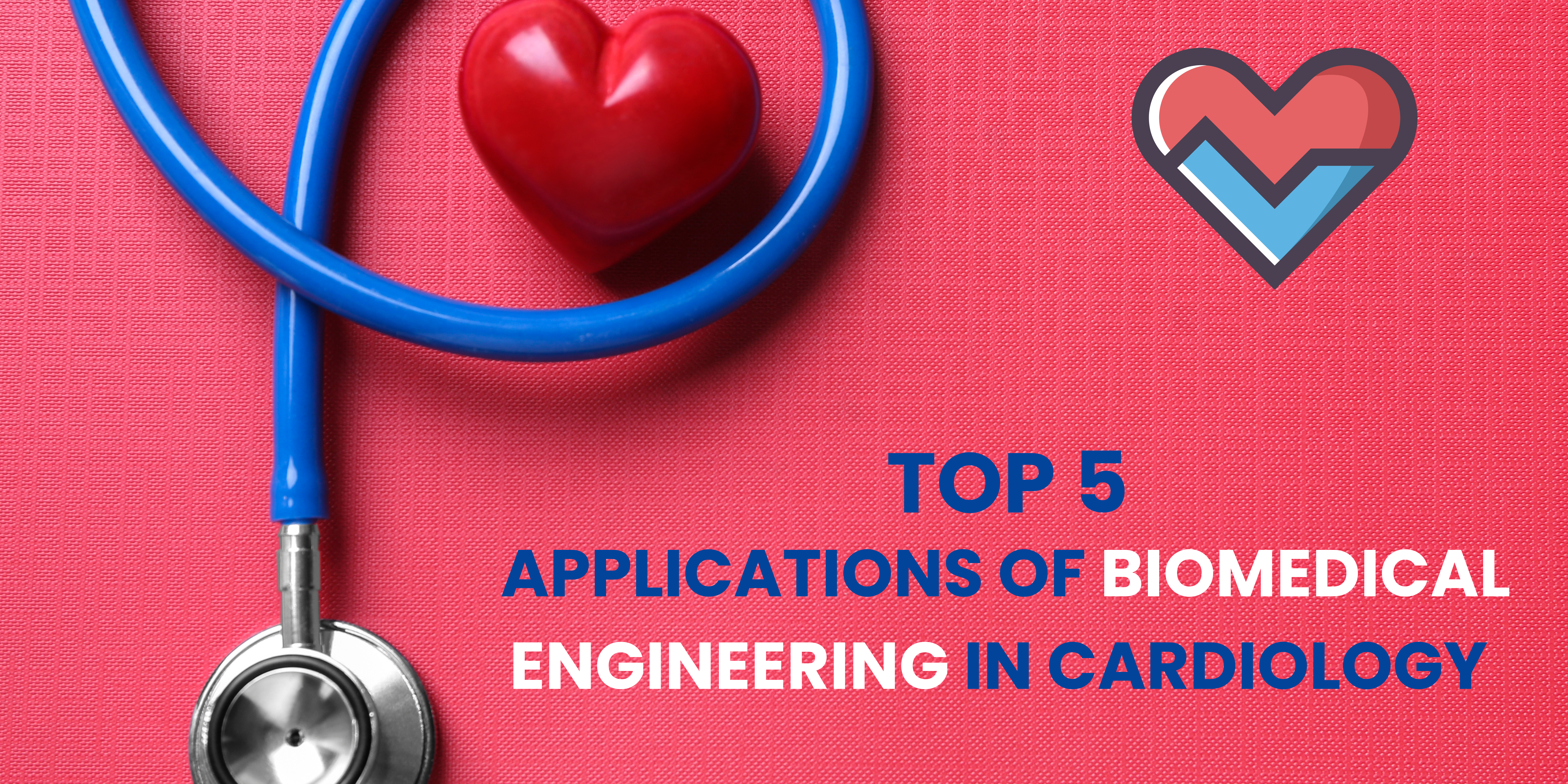Top 5 Applications of Biomedical Engineering in Cardiology
Just wanted to share something interesting!
We all know that cardiology is all about diagnosing, treating, and preventing heart and circulatory system diseases. And Biomedical Engineering is all about using engineering principles to solve medical and biological problems.
But when these two fields come together, they make incredible breakthroughs in diagnosing and treating cardiovascular diseases. Are you curious about the top 5 applications of biomedical engineering in cardiology? Here we go!
1. Imaging Technology
The integration of imaging technology into cardiology represents a major advancement, enabling the diagnosis and treatment of heart conditions. Biomedical engineers have pioneered diverse imaging modalities, including echocardiography, MRI, and CT scans, facilitating visualization of the heart's structure and function. These cutting-edge techniques play a pivotal role in the diagnosis and monitoring of various heart diseases, including coronary artery disease, heart valve issues, and heart failure.
2. Pacemakers and Implantable Cardioverter Defibrillators (ICDs)
Pacemakers and ICDs are prevalent tools in cardiology. A pacemaker, a petite apparatus, aids in heart rhythm regulation by transmitting electrical impulses to the heart. Conversely, an ICD identifies and manages irregular heart rhythms by administering a shock. Biomedical engineers have been instrumental in advancing these devices, refining pacemaker sizes and optimizing ICD algorithms for enhanced effectiveness.
3. Artificial Heart Valves
Artificial heart valves replace impaired or unhealthy heart valves. Biomedical engineers have innovated diverse categories of these valves, encompassing mechanical and biological variants. Mechanical valves, crafted from resilient materials like titanium or carbon, boast longevity spanning many years. Conversely, biological valves, derived from animal or human tissue, offer an alternative that, while less durable, obviates the need for prolonged blood-thinning medication.
4. Nanotechnology
Nanotechnology emerges as a promising frontier to transform the landscape of diagnosing and treating cardiovascular ailments. Biomedical engineers have spearheaded the creation of diverse nanoparticles capable of precisely targeting cells or tissues, including those within the heart. Leveraging these nanoparticles, medications can be directly administered to the heart, damaged cardiac tissue can be repaired, and the occurrence of blood clots can even be forestalled.
5. Cardiac Tissue Engineering
The realm of cardiac tissue engineering endeavours to generate operational heart tissue utilizing stem cells or alternative cellular sources. Biomedical engineers have devised an array of methodologies for fabricating heart tissue, such as 3D printing, microfabrication, and bioreactor cultivation. This innovative technology holds promise in revolutionizing heart disease treatment by substituting impaired or diseased cardiac tissue.
As you explore the vast potential of Biomedical Engineering, Sri Ramakrishna Engineering College offers an inviting platform for your academic journey. Our Department of Biomedical Engineering is dedicated to honing your skills in various health-related technologies like medical electronics, rehabilitation engineering, molecular diagnostics, medical data science, and therapy design. With collaborative opportunities with sister organizations, our college enriches your learning experience with invaluable knowledge and expertise. Consider Sri Ramakrishna Engineering College as your next step towards shaping the future of healthcare technology.
Welcome to a nurturing community poised to support your aspirations and endeavours.


